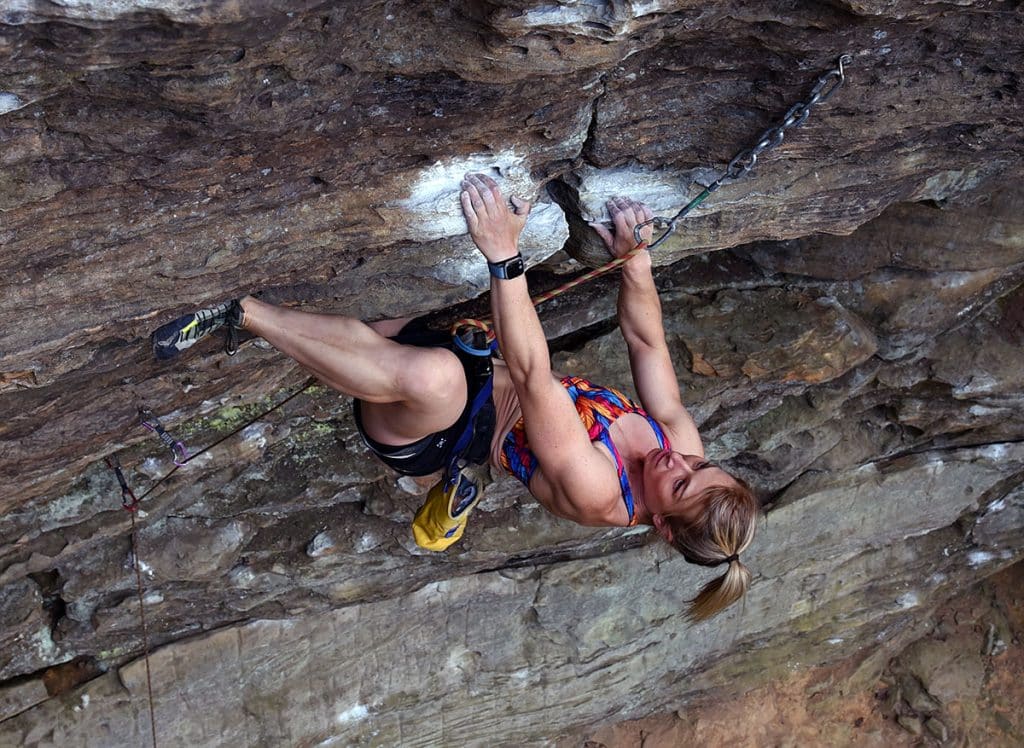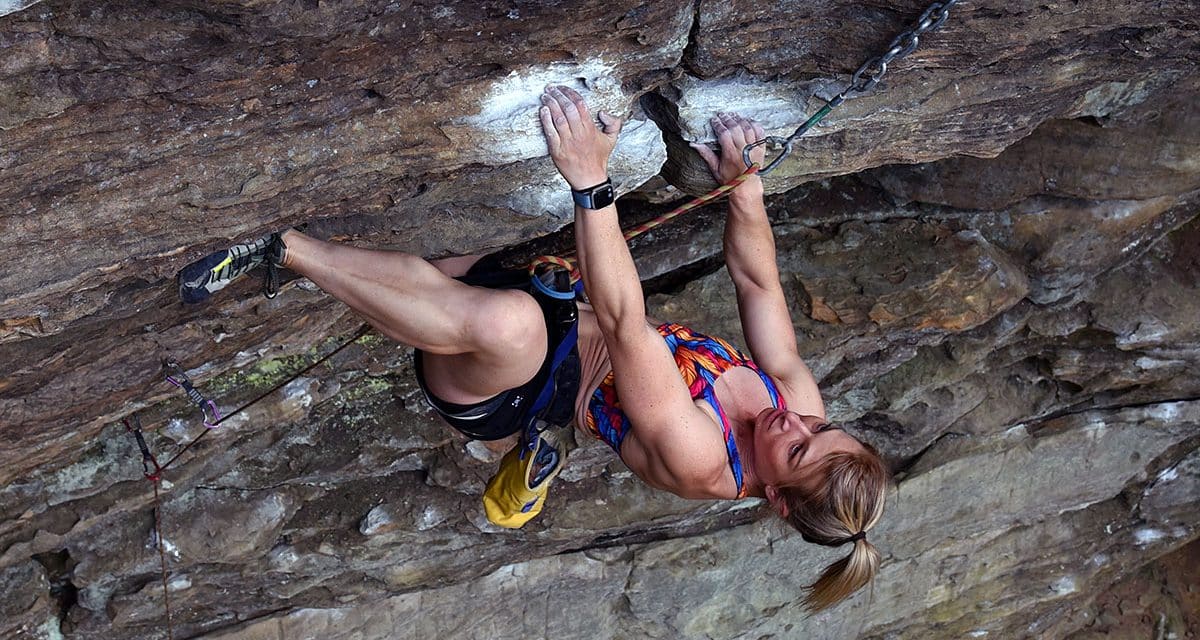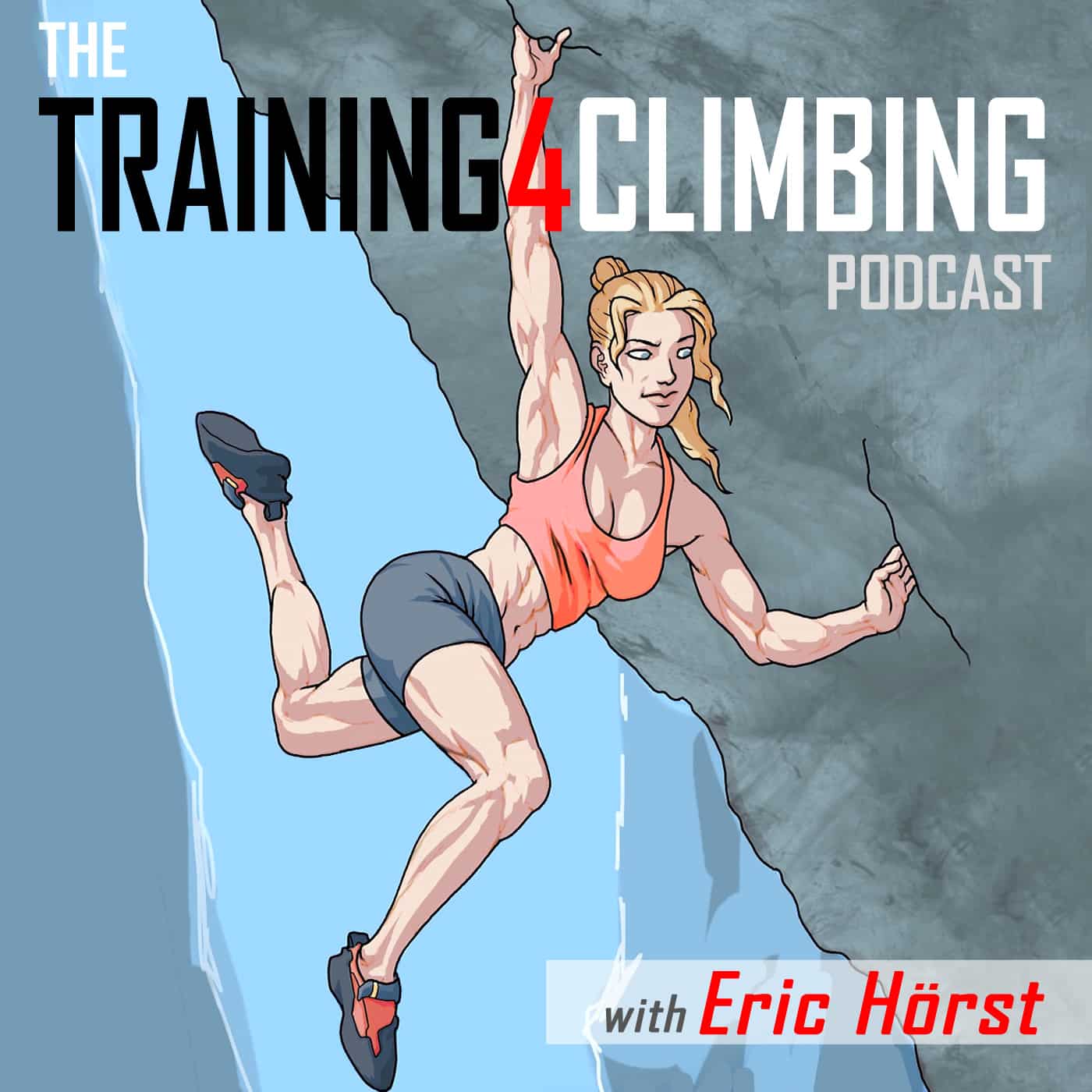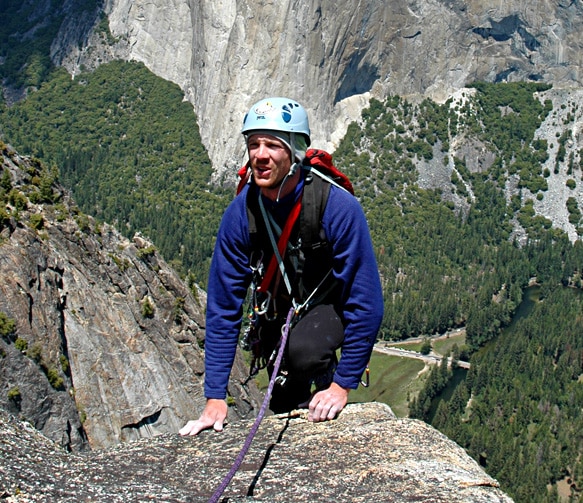There’s no better feeling than the victory of a hard send. But behind every hard send is plenty of hard work. Learn how to tackle the projecting process best so you can take it to the chains faster—and experience the sending high more often!
Every passionate sport climber dreams of getting down to work on a sick rig and piecing together a redpoint ascent before the sun sets on another great day at the crags. All too often, however, a project might demand more than one day of work to complete. While it’s great to work toward a long-term project, becoming a better climber comes from sending—not just projecting. Sending more routes will elevate your physical and mental skills, and bring you closer to being able to send that long-term project in the first place. With that in mind, it’s important to avoid getting sucked into the confidence-killing modus operandi of spending most of your crag days hang-dogging all over routes that are clearly an overreach at your current ability.
Let’s start with the basic strategy for effectively working—and sending—the rig! Next, we’ll go into some tips on how to best attack a route that doesn’t go down on the first day. We’ll wrap up with a philosophical look at dealing with those frustrating long-term projects.

Jessie Graff projecting in the steeps at Red River Gorge. (Horst photo)
6 Tips for Working and Sending Your Project!
1. Pick the right route. To avoid getting bogged down in a long-term fight, pick a route that lies somewhere between two letter grades below and one letter grade above your hardest redpoint within the past six months. Avoid routes more than one letter grade above your limit, unless you stumble upon what you feel might be the perfect route to go for a PR send.
2. Chunk down the route into manageable parts. Aim for three to five chunks, separated by the best rest positions. A sustained route with no good rests will need to be worked bolt-to-bolt. Get to work on solving each chunk as a mini-route of its own. The initial chunks will naturally get the most work, but be sure to wire the final chunk of the route so that there’s no doubt in your mind that you can send this closing section in a fatigued state. Falling off on your way to the anchors is form of self-torture!
3. Identify the crux sequence(s). Then, spend plenty of time sussing out the best moves to surmount the difficulty. Don’t automatically accept other people’s beta as the “best way” to do the crux. Try out a couple different sequences of your own creation. Remember, there’s nothing wrong with climbing up, taking, falling, or lowering and doing it all over again over and over. The goal is to figure out all the possible options. Widen your view and search for creative solutions: sidepulls, underclings, hand matches, hidden footholds, heel hooks, and unchalked intermediate holds. Discovering a new handhold, body position, or foot finesse can unlock a move that felt impossible at first!
4. Dial in the crux sequence to the point that it becomes almost automatic. As a rule, you should be able to climb the crux chunk two or three times off the hang without falling before considering it to be redpoint-ready. Identify proprioceptive cues to guide you through the hardest moves. During your practice runs, focus on the sensations in your arms, legs, and torso from a successful execution of the move. Compare these sensations with those from your failed attempts. Use these successful sensations to remember the correct way to approach the crux on the repoint run.
5. Recoup energy. After working through the entire route, including climbing the crux chunk three times, take a thirty- to sixty-minute rest before going for the redpoint. Research shows that light active recovery hastens recovery, so take a mental break from the climb by going for a short walk and refueling with a snack or beverage on the way. After ten to twenty minutes of strolling around, return to the base of the route and engage in some visualization to help initiate a successful ascent.
6. Go forth confidently. As you rope up for the redpoint attempt, allow a calm confidence and expectation of success to swell within you. View any arising nerves as a good sign that your brain is triggering a release of adrenaline. This release will help prepare you for a top-notch physical effort. Finally, nix the fear of failure by accepting ahead of time the possibility of a failed outcome. By understanding that it’s okay to fail and eliminating this fear, you increase the odds of success. Empty your mind, engage the moment, and let the redpoint unfold one move at a time.
3 Tips for Working Multi-Day Projects
1. Consider your energy levels. If the project doesn’t go down on day one, you’ll need to determine whether you have it in you to send on day two. Obviously you won’t be as physically fresh, but your brain often makes up the difference via muscle memory in the subconscious. It’s for this reason that many tired climbers often surprise themselves with a miraculous send on the second day! Coming in with a less-than-full gas tank might mean you only have one or two good goes in you, so plan your day strategically make them count. If the send eludes you on day two, then you’ll want to take a couple days or a week off before returning to the scene of this climb.
2. Set a simulator of the project’s crux sequence. A home wall or spray wall at the local gym works well for this. Work the simulator sequence several times per workout to develop the specific motor programs and strength needed to send the project. Supplement your physical practice with ten to twenty minutes of bedtime visualization—make this mental movie as vivid, detailed, and as bottom-to-top complete as possible.
3. Resist the urge to immediately go for the send. When you return to the route, climb the route bolt to bolt instead as a way to physically and mentally prepare for a successful ascent. Remember the proprioceptive cues that you get from successfully executing the crux sequence. Be sure you have the final run to the anchors dialed in tight. Once you’ve worked through these pieces, lower to the ground and rest for thirty to forty-five minutes before really going for it.
When Your Project Becomes a Prison
Failing on a route for many days—or even weeks—in a row can damage your self-confidence. It can even destroy your motivation to climb. If you reach this point, give the project a rest. Temporarily shift your focus onto something else for a few weeks. The best way to regain your confidence and invert negative emotions is to go send some routes! Reel in your expectations and climb with the only goal being to regain your mojo. Aim to send many routes two to four letter grades below the project grade. After a period of absence your heart will grow fonder. You’ll then be ready to consider returning to the project when the time is right.
(This article was originally published in June of 2019, but these projecting tactics are timeless!)
Related Articles:
- Overcoming the Fear of Failure
- Project-Specific Training with Indoor Simulator Problems
- The “10-4” Rule for Projecting Sport Climbs
- Highpointing Versus Lowpointing Tactics for Sending Your Project
- Effective Projecting and the Secret for Sending
Copyright © 2000–2023 Eric J. Hörst | All Rights Reserved











